How to Acquire and Retain Gamers in the App Store and Google Play
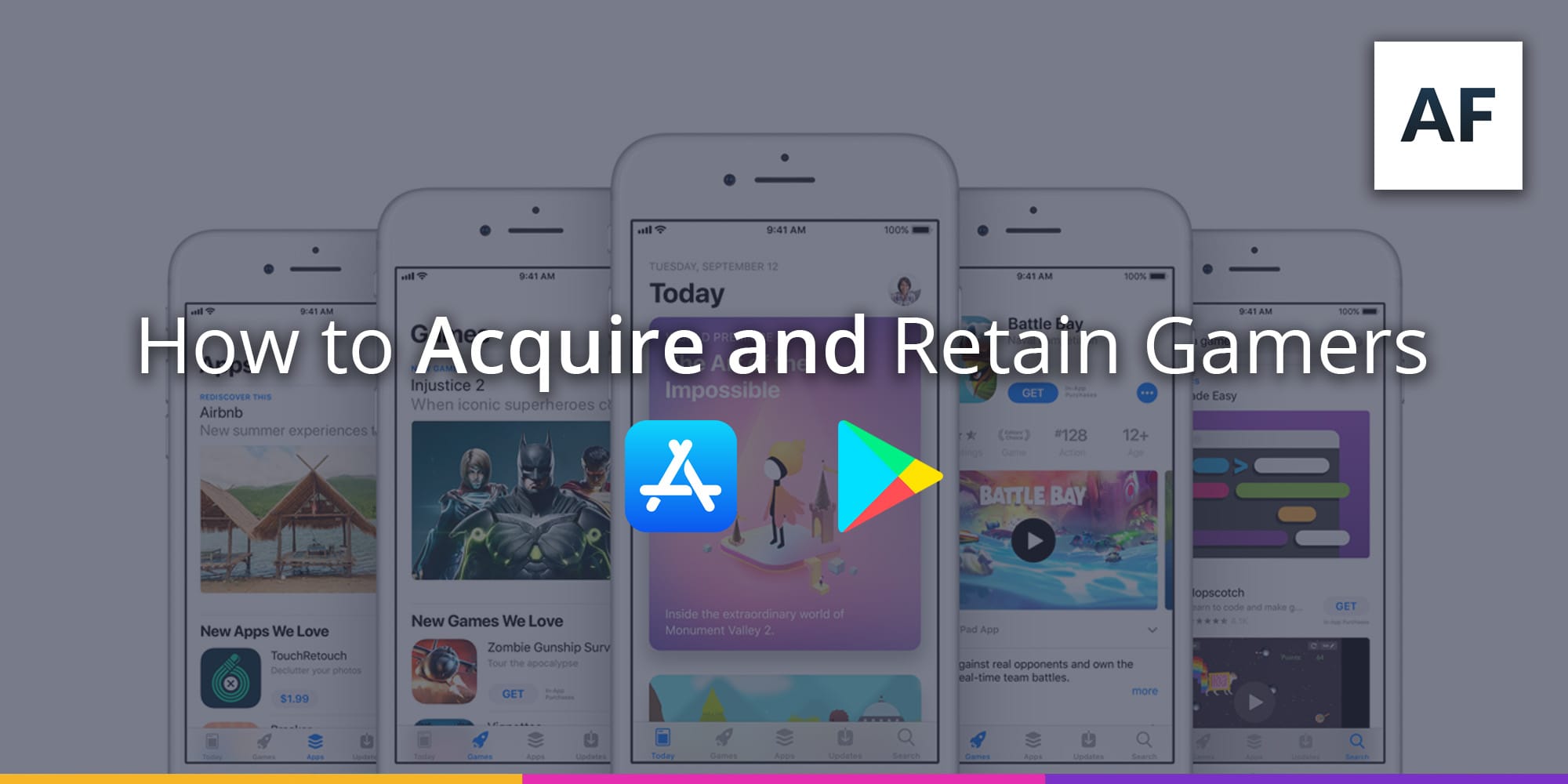
Games acquire and retain users in different ways, like paid advertising, working with communities, and – something a lot of developers are starting to use – app store optimization. But there's one channel for interacting with users that many of them still aren't paying attention to – feedback in app stores. This channel is traditionally associated exclusively with the app's average rating (i.e. acquiring users), but it directly impacts retention and product development.
AppFollow's data shows that app store reviews generate 30% to 100% of feedback for game apps. This number depends on how developers collect feedback:
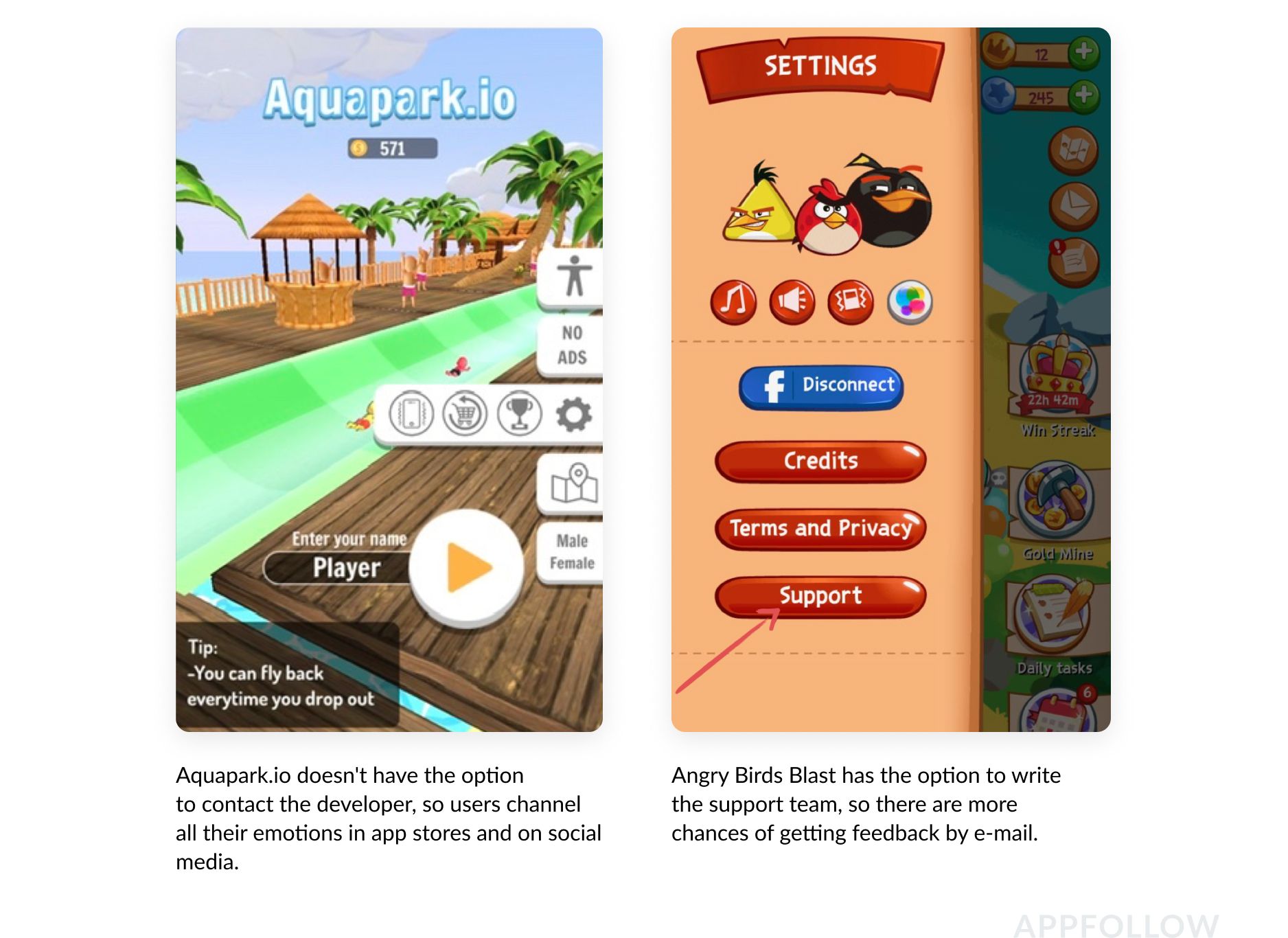
App store reviews increase your ability to publicly influence users' moods. 15% change their mind after getting a response from a developer. In this article, we take a look at where, when, and what these users write and how you can influence their opinion.
We'll use stats and examples from game apps, but these techniques work both for game developers and companies working on a product.
What to look at and where to find it when acquiring and retaining users
No matter what analytic tools you work with, start off by looking at user reviews and your app's average rating.
Despite the fact that Android apps don't have an in-app rating request (Google promises to change this soon), Google Play gets multifold more reviews than the App Store does.

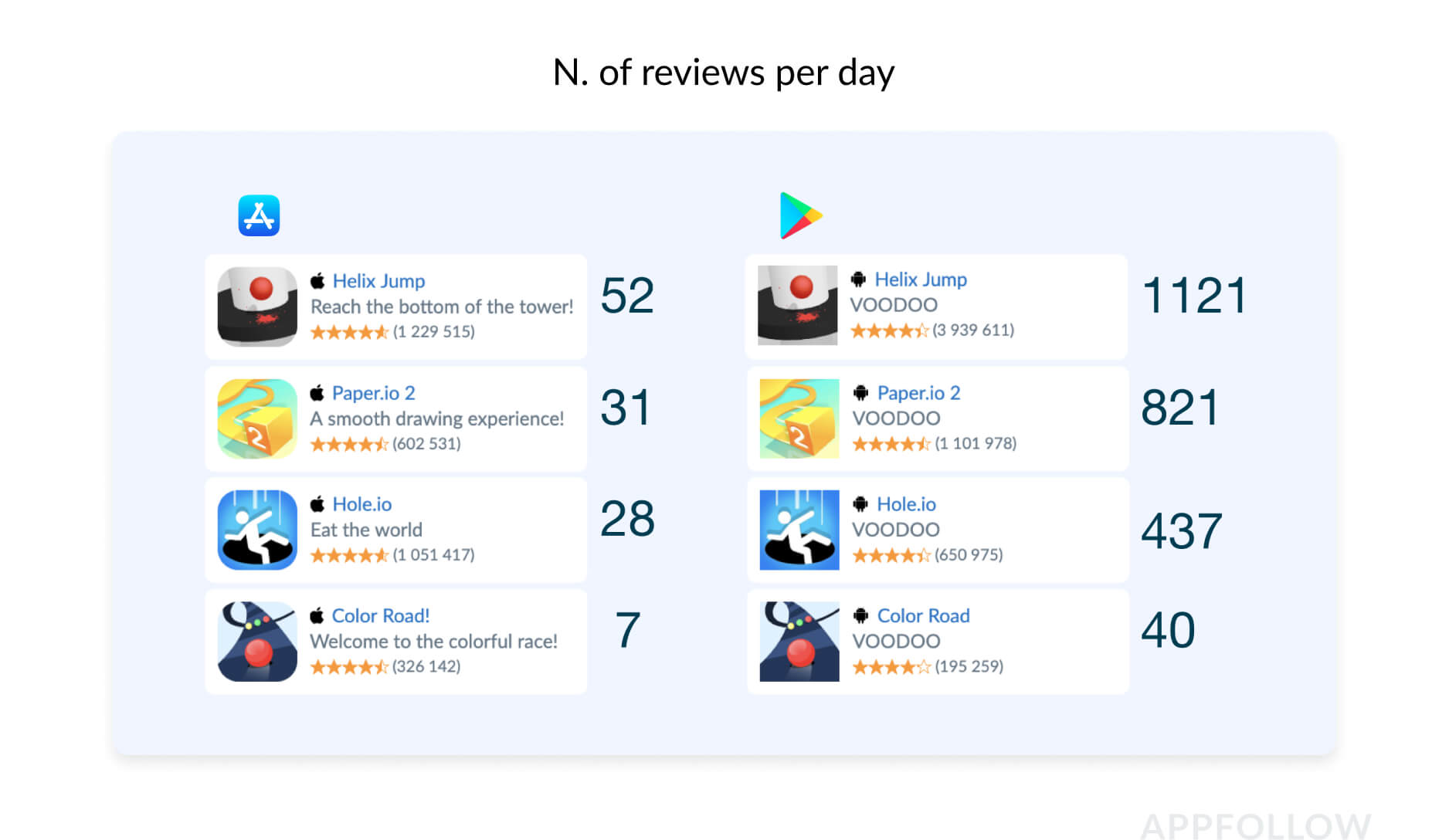
It seems like users write for hundreds of different reasons. When you don't have enough hands on deck to respond to them right away, it's hard to decide which reviews to reply to first. Developers try to reply to recent and 1-star reviews, but these aren't the reviews you should spend your time on.
5 types of app reviews to watch out for when you don't have time to reply to everything
We analyzed how the content of reviews corresponds to their rating and what's worth spending time on:
- Users who give a game 2 stars write the most. Statistically, these are the longest reviews in which users generally express their frustrations. Likes indicate the number of gamers who have the same problems but are too lazy to write a review.
- 1- and 3-star reviews are the same length. The difference is that 1-star reviews more often contain unsubstantiated negative comments like "everything's bad". That kind of user is hard to engage in dialogue.
- Some 4-star reviews are long reviews from loyal players that sincerely want to improve their favorite game. If you ignore their feedback, they'll change their review to 1 star over time.
- The pithiest users leave 5-star reviews, usually writing "it's great" or "love the game".
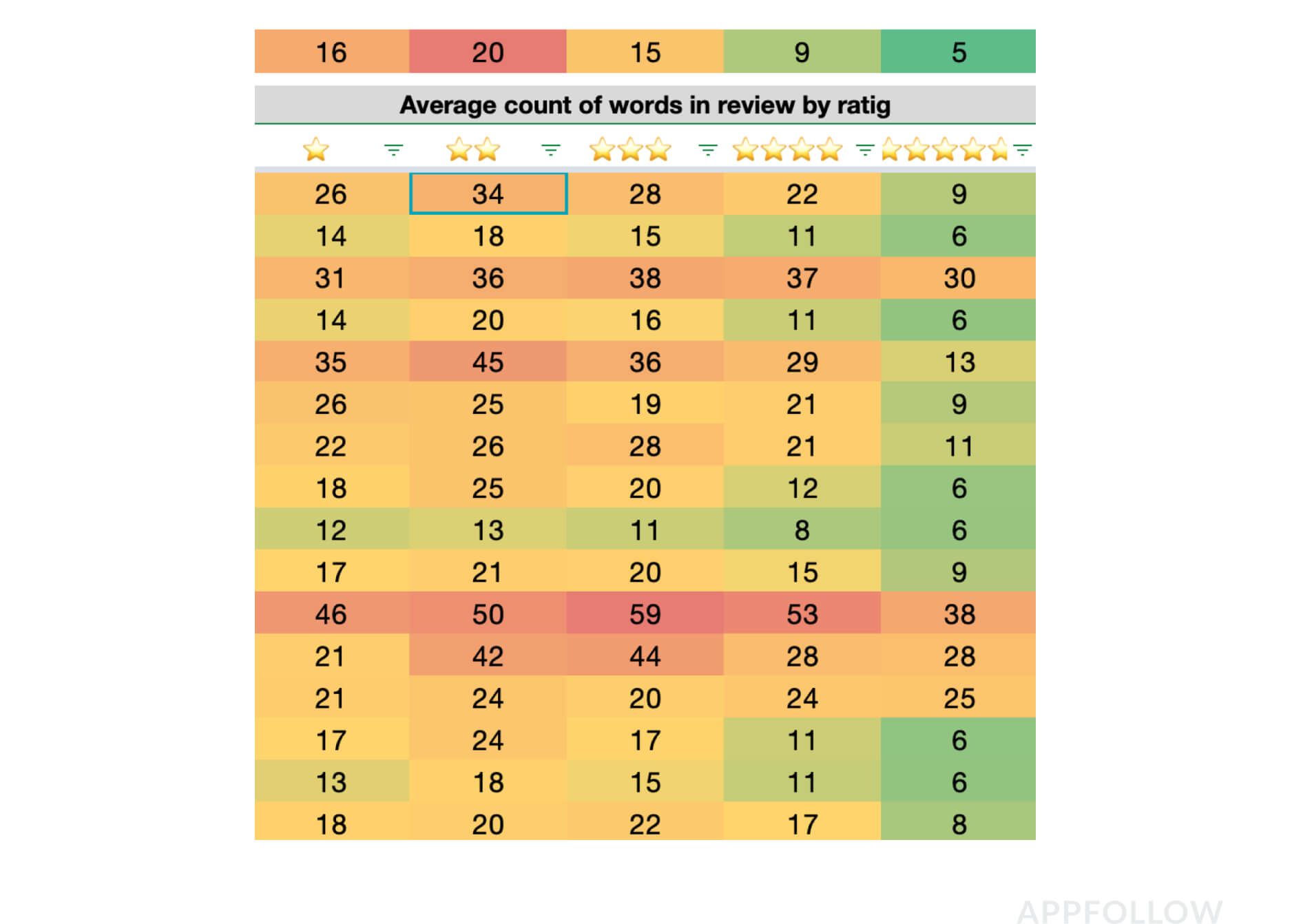
The average rating doesn't always help identify user problems. Only 10% to 30% of them express their opinion. The rest just tap a star. Here at AppFollow, we identified 3 kinds of ratings:
- Average Rating – what users see in search results and on the app page;
- Rating by Reviews – ratings users leave with a review.
- Featured Review Rating – the average rating for featured/helpful reviews that appear first on the app page.
We recommend looking at different types of ratings depending on whether you're trying to acquire or retain users:
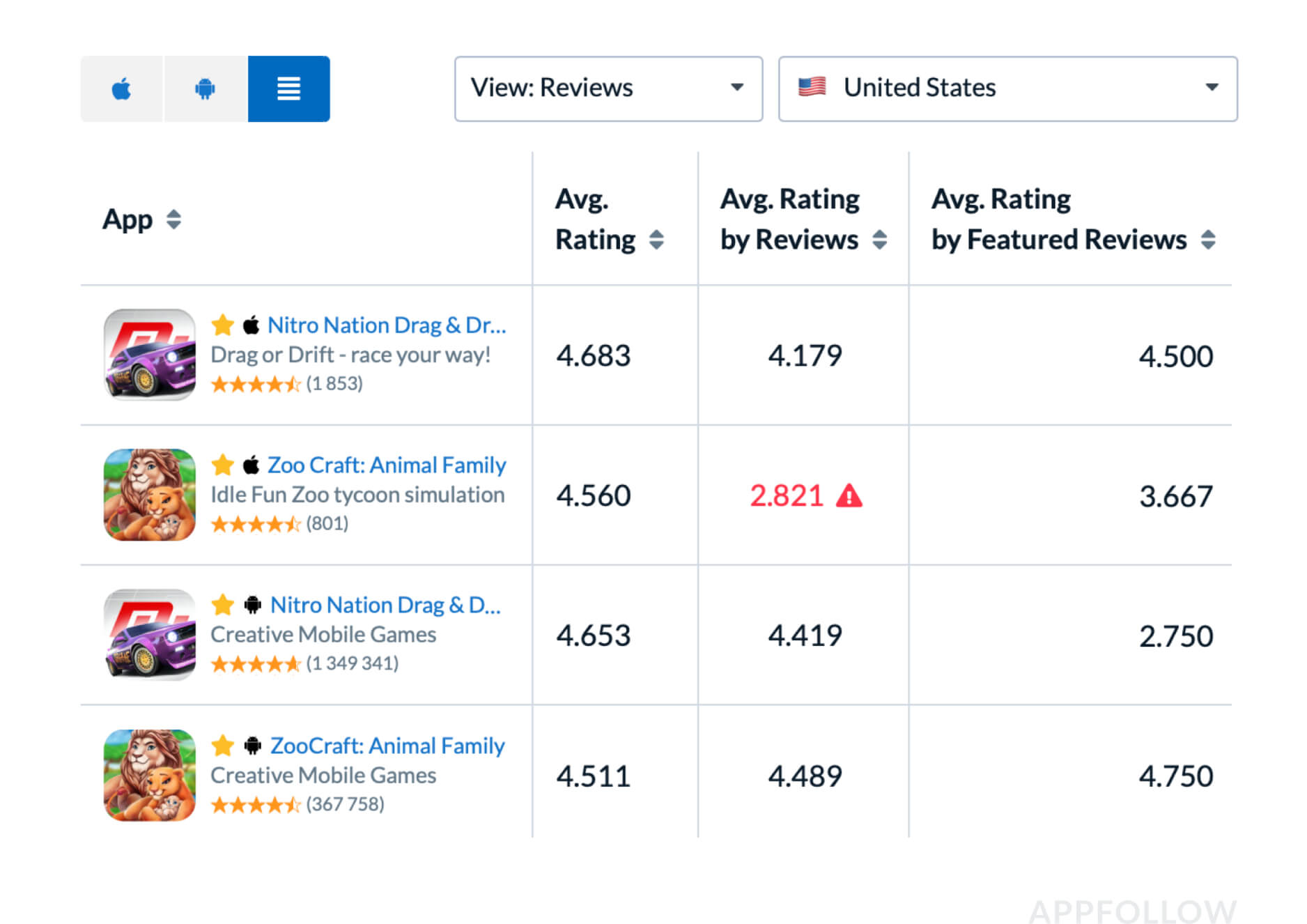
Now that we've looked at the basic metrics, we'll turn our attention to tactics you can use for each specific case. As a bonus, we'll talk about what to look at to improve your game overall.
How to impact User Retention
What to look at: Rating by Reviews.
Retaining users and building their loyalty comes from working with updated reviews. If the user updates a review, leaving a game a low rating (4 -> 1), that's the first sign of trouble. Without the proper reaction from the developer, the user will delete the game. After that, you won't be able to reach that user no matter what you reply.
The first thing to look for when working on retention is drops in rating changes:

Another way of impacting loyalty is by targeting long reviews. When a user writes a novel on their phone or tablet, it means they're really passionate about your product. The user may have spent an hour spilling their heart out about a problem with the product. It's an obvious source of pain that must be addressed and replied to in the proper way. The standard reply "thanks for your feedback, we'll send it to the developers" will probably tick off the user rather than increase their loyalty.
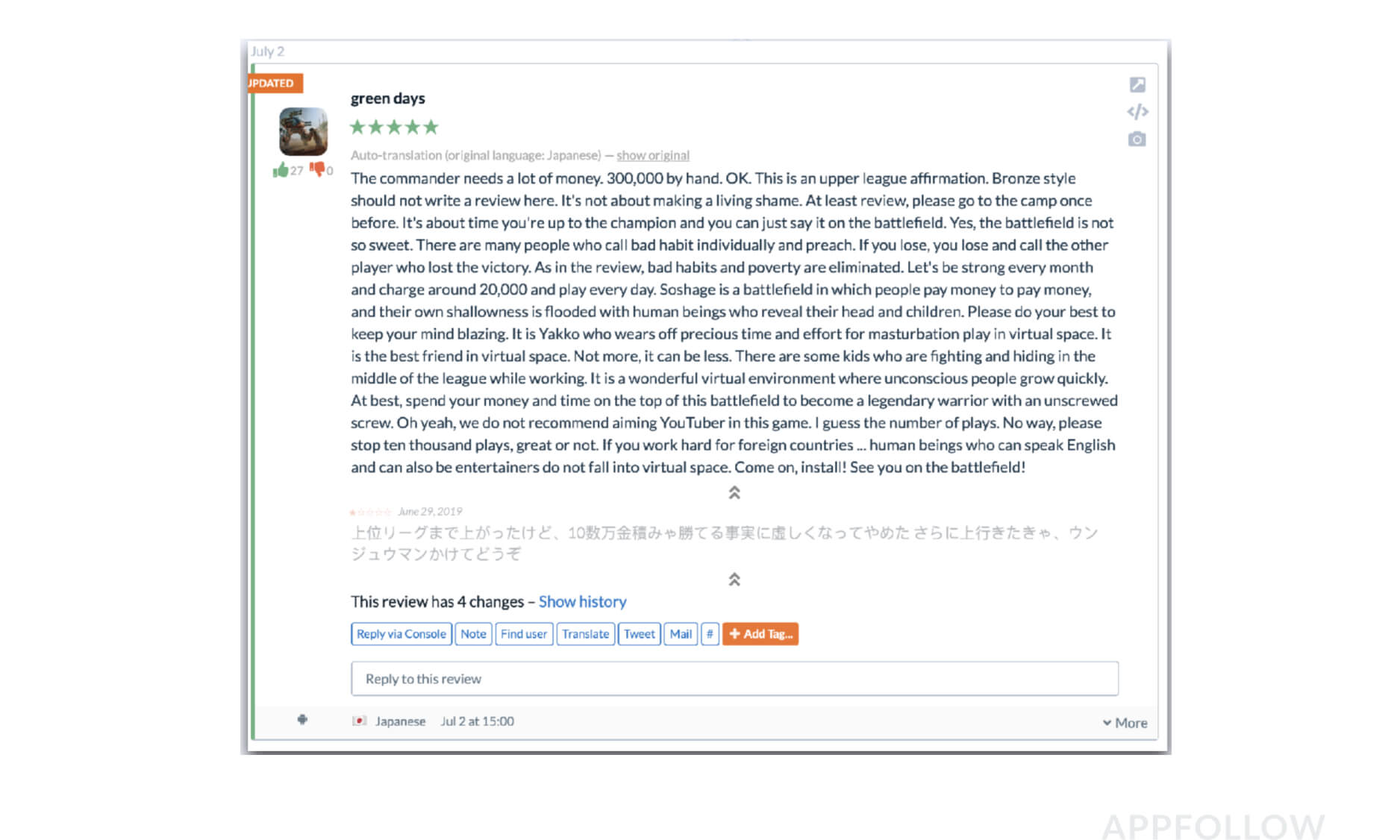
4 strategies for increasing user loyalty even if you haven't worked on it before.
How to work on User Acquisition
What to look at: average rating and featured review rating
The average rating and featured review rating impact download conversion rate as much as the icon, title, and eye-pleasing screenshots.
The first thing visitors see in search results or collections is the app's rating, which is made up of star ratings and reviews. We've identified that the rating of apps and games in the top charts and featured section is 4.5 stars. Apps with a sub-4-star rating lose up to half of their potential downloads. Users simply don't click on them in search results when they see the low rating.

If the rating doesn't scare off potential users, they'll visit the game page. We all look to see what others think about a product before purchasing it. Gamers are no exception, which is why they first look at featured and helpful reviews, i.e. the reviews displayed on the game page in the app store. Negative reviews, especially ones without a reply, will hardly propel users to download the app.
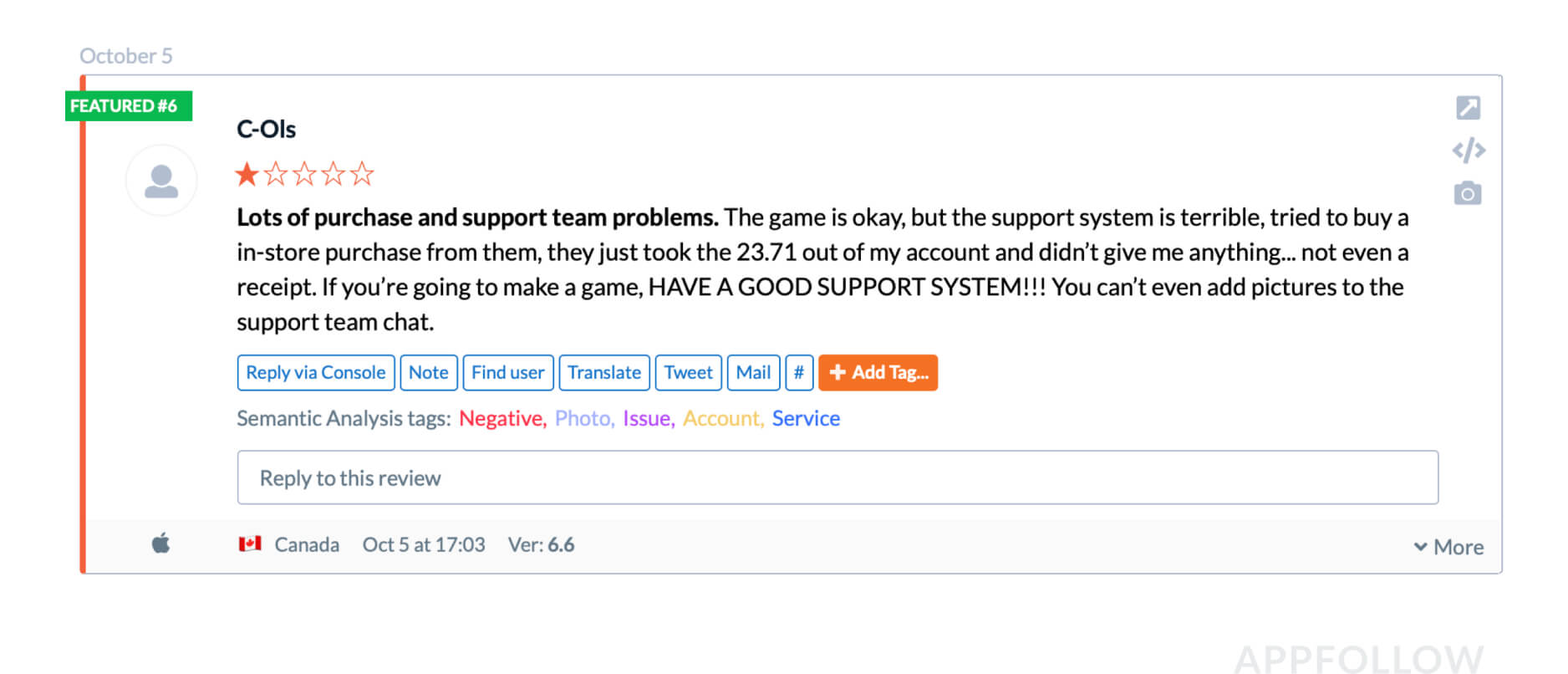
How to approach Product Development
What to look at: a quantitative and qualitative analysis of reviews, average rating after release.
Users often write about game mechanics, gameplay, new features, or characters. It's hard for a developer to understand what the real takeaway is just by reading reviews. That's where analyzing reviews comes in handy.
Quantitative analysis helps identify problems. Users usually write about them after an app is released, after it's featured, or if a bug's missed.
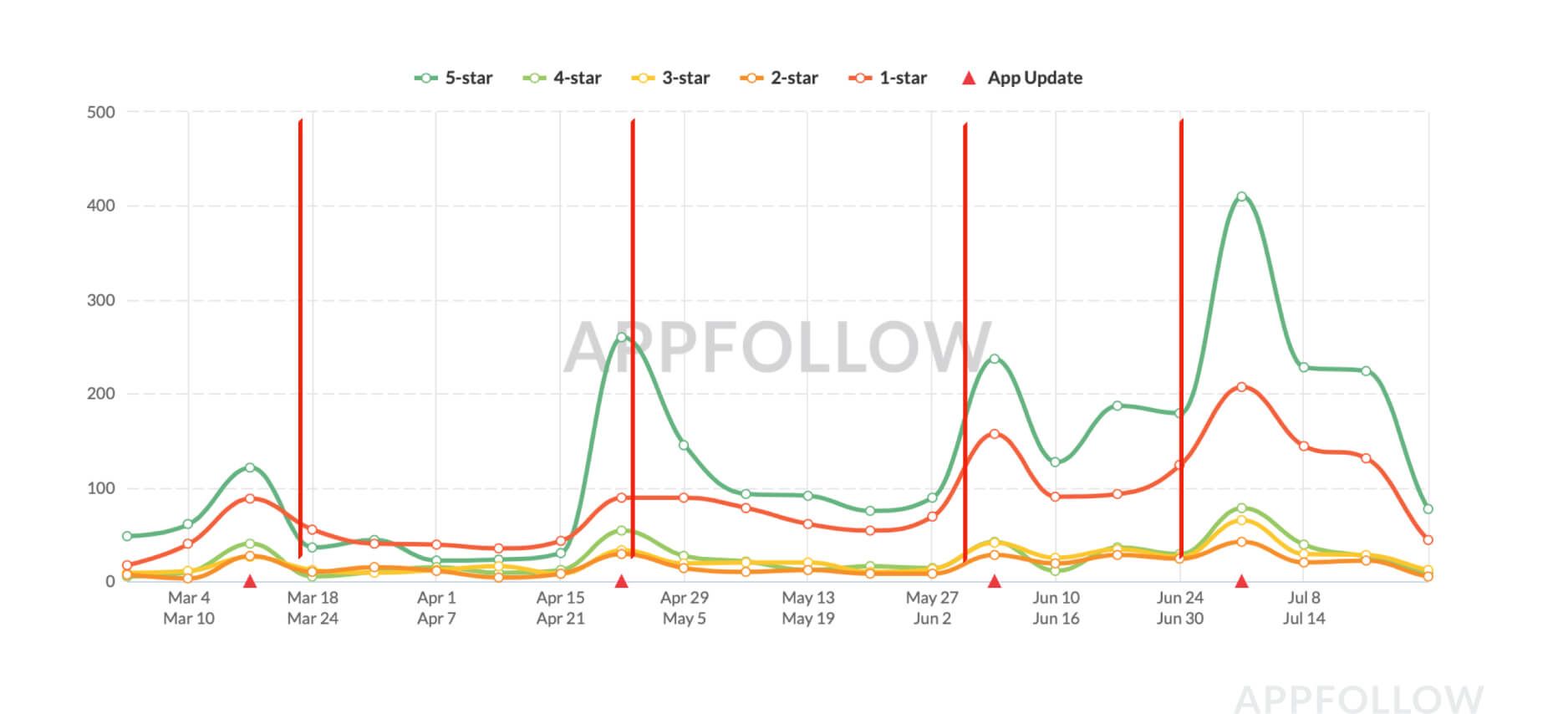
If an app gets featured, negative reviews can soar unexpectedly, especially if the developers didn't prepare for it. For example, getting the App of the Day card brought the game PES 2019 PRO a ton of 1-star reviews in Mexico. This could be because servers weren't ready, the game didn't meet new users' expectations, or other reasons.
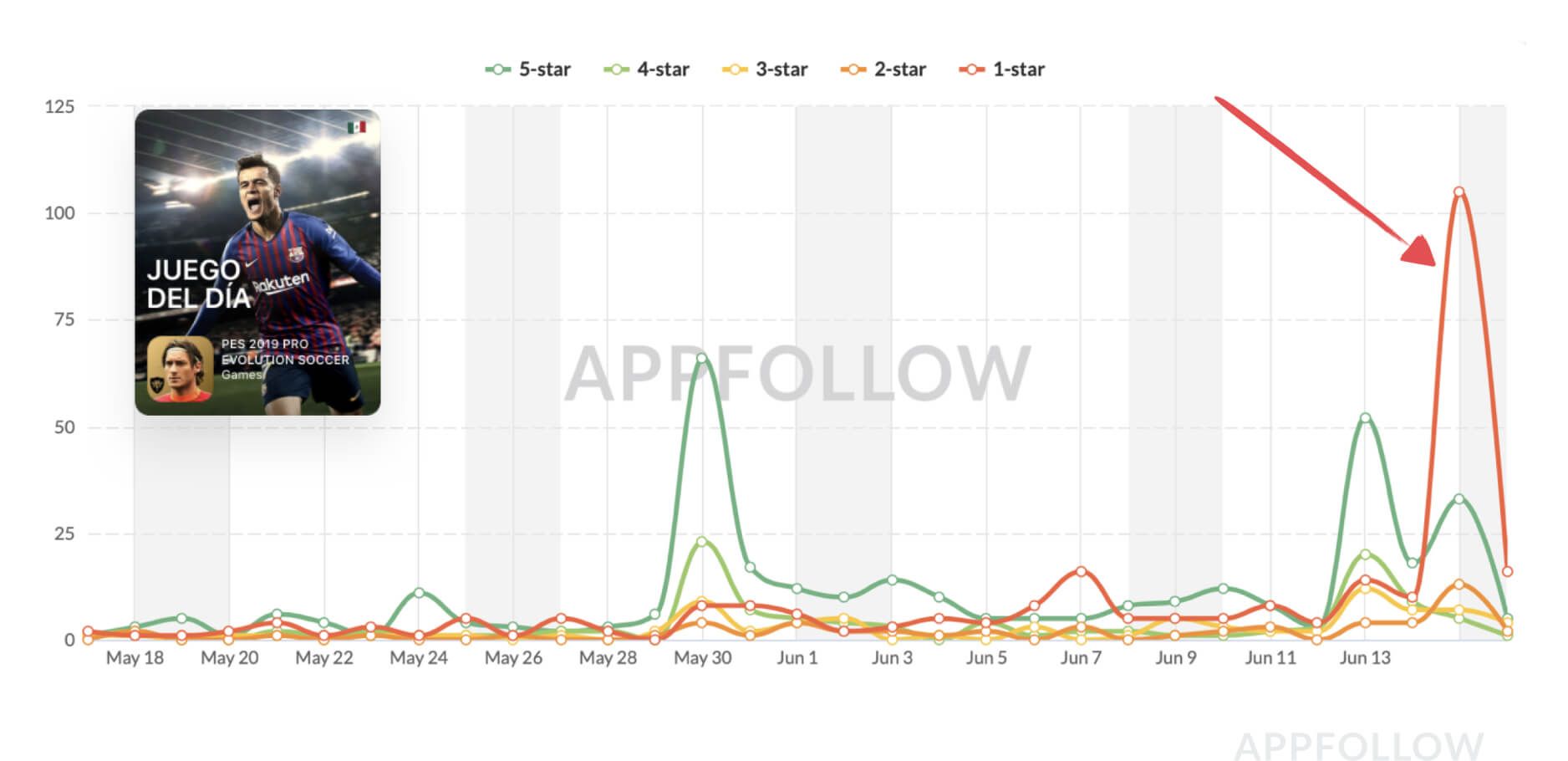
To understand why these jumps happen, we use qualitative and semantic analysis. Analyzing topics, popular words, and review moods helps to quickly find:
- Bugs and glitches
- Intrusive advertising and overpriced costs
- Hard levels and navigation problems
- Local problems
- Feature requests
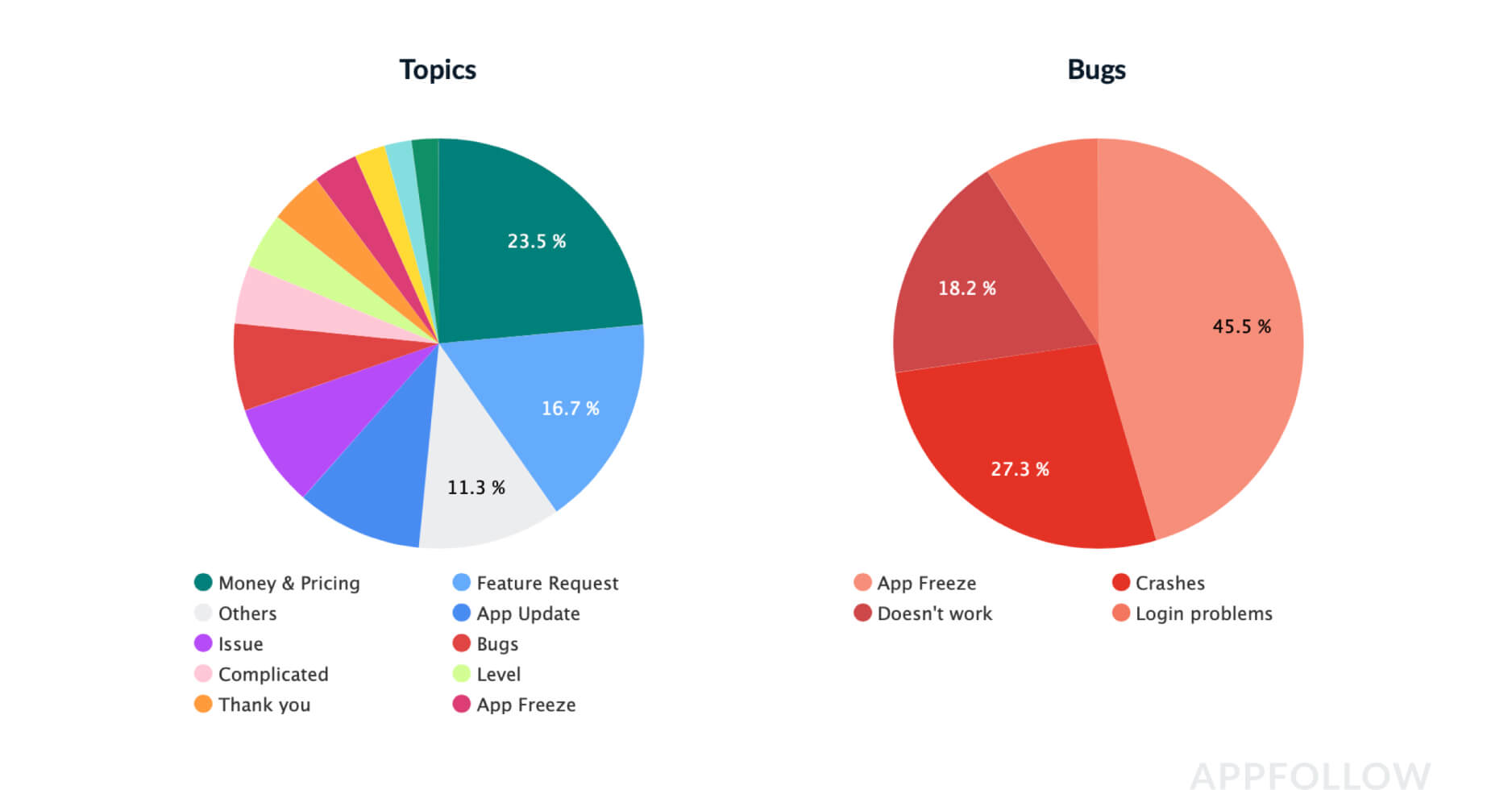
By working only with the "problem" reviews", you can build loyalty and retention among these users.
How to know your replies worked
We recommend shooting for one metric: an average rating of over 4.5 stars. However, it may not increase as quickly as you'd like it to. You can track changes to reviews with replies as well as the game's overall score to check intermediate results.
For example, AppFollow shows how many points per month an average rating rises (or falls) with replies:

Also keep track of changes to the app's overall score, i.e. the correlation of positive sentiment to negative sentiment in reviews.


Written by Anatoly Sharifulin
CEO & Co-founder at AppFollow.io, the tool that helps apps become top-ranked on app stores.
Anatoly has been involved in the development and promotion of mobile apps since 2009. Starting off as a developer, he quickly rose to become head of product and launched his own mobile startup in 2013.



